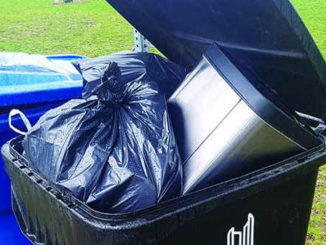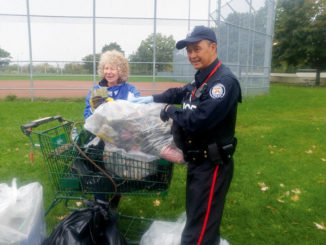If you’ve never experienced a flooded basement, I can tell you that it ranks high on the list of a home owner’s worst nightmare. Messy, stressful, costly and very inconvenient!
My first home in Leaside was a small semi-detached with an unfinished basement. There was a drain cover in the middle of the concrete floor, which I didn’t give much thought to, until I went down to do some laundry one morning and noticed a foul odour accompanied by a small lake of nasty looking stuff pooled around it. Panicked, I put on my rubber boots and gloves, got out my mop and bucket, called a local plumber who thankfully arrived quickly with his drain snake in hand and the problem was quickly solved. Wanting to avoid any future floods, I asked him to explain how Leaside’s sewer systems worked and give me some tips about keeping my drains clean and flowing. . . .
I learned that my backup was caused by a clogged drain emptying into the sanitary sewer system. This is the system that carries the water from our kitchen and bathroom sinks and toilets to treatment plants before being released into Lake Ontario. Thank goodness for that!
He told me that in kitchens, the biggest clogging culprit is the fat, oil and grease (FOG) found in meats, fats, lards, cooking oil, shortening, butter and margarine, food scraps, baking goods, sauces, salad dressings, gravies and dairy products. When we flush these products down our kitchen drains it not only causes a blockage in our household plumbing, but it also builds up in the city sewers and creates blockages which attract rodents and cause back-ups. He suggested I wipe FOG up with a paper towel and dispose of it in my green bin. Done!
Next stop was the bathroom toilet. He advised that disposable wipes/diapers, bandages, cotton balls/swabs, dental floss, hair, kitty litter, medications, tissues/paper towels, or food should never be flushed down the toilet as they can clog sewer facilities or may contain harmful chemicals. Lesson learned!
I asked him about the grates or catch basins on the roadways. Where did that water go? He explained that the storm sewer system carries rain and melted snow away from our homes and goes, directly, untreated, into our neighbourhoo. creeks, rivers and, eventually, Lake Ontario. Note to self. I promise to never put anything down a sewer grate including hazardous liquids, dirty/soapy water or flotsam and jetsam that I don’t want to see floating in the Beaches.
What is the City doing to prevent basement flooding? A lot! In response to a severe storm in August of 2005 that resulted in the flooding of Leasiders’ homes, City Council approved the “Basement Flooding Work Plan” to undertake investigations to alleviate future flooding in 34 basement flooding areas including Leaside. The objective of this study was to:
• assess the existing major and minor storm water systems and the sanitary and combined sewerage systems to identify the causes, mechanisms and impacts of basement flooding, and
• develop a comprehensive flooding remediation plan
A number of initiatives were recommended and are being implemented including the Roof Downspout Disconnection Program, the replacement of existing sewers with larger diameter sewers to provide additional capacity, the construction of new storm sewers and increasing the number of catch basins.
Let’s all commit to keeping our sewer systems litter free so that April showers will bring May flowers rather than flooded basements!
TIME FOR SOME OUTDOOR SPRING CLEANING!
The City of Toronto’s annual spring clean-up weekend takes place:
· Friday, April 21 for corporate and school groups
· Saturday, April 22 (Earth Day) and Sunday, April 23 for community groups
Leaside streets and green spaces need our help to pick up the litter that has accumulated over the winter. I’ve got my area staked out in and around Trace Manes Park. What will you choose? It can be as simple as your front yard or street. Or if you’re feeling really ambitious, choose your favourite public space such as Leaside Memorial Community Gardens or one of the many local parks, including Serena Gundy, Sunnybrook, Leonard Linton, Howard Talbot, Father Caulfield, Sandy Bruce, Leaside and Crothers Woods. Be one of the more than 190,000 Torontonians who get involved every year to keep their local neighbourhoods green and litter free. Go team Leaside Litterati!





